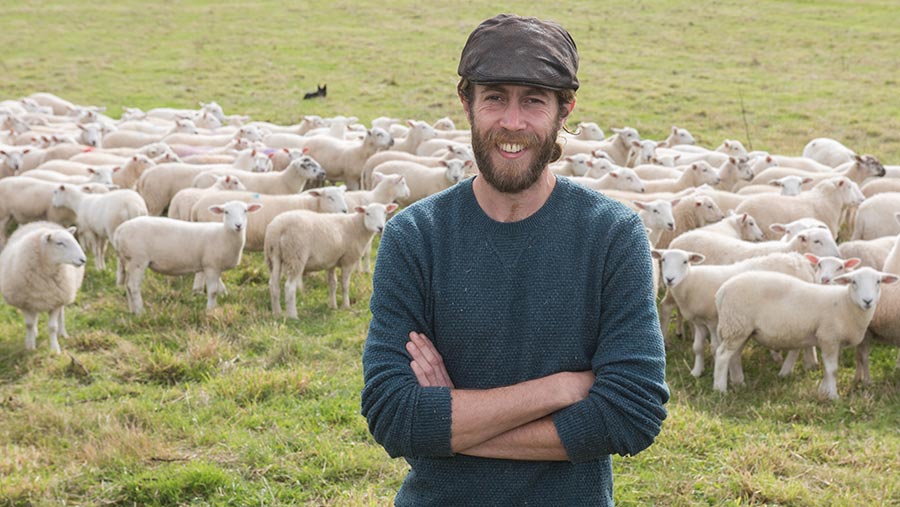Farmer Focus: Data is starting to sell more rams
 © Hugh Nutt
© Hugh Nutt “Genetics, not cosmetics” is the mantra of the Exlana breeders. Although I much prefer the way wool-shedding sheep look to traditional woolly ones, it is their ease of farming and profitability that first attracted me to them.
I am clearly not alone. This year saw the eighth Exlana elite genetics sale held in Devon and once again it was well attended, with the now expected buzz in the air. Lots of both familiar and new faces.
With an almost total clearance of rams sold on the day to an average of £1,250, and with four animals selling for more than £3,000, I think it can be called a success.
See also: Exlana genetics thrive in new entrant’s low-input setup
A remarkable 40% of rams were sold to a total of 28 online bidders.
This shows an increasing trend. More than 200 rams were sold last year, with 75% picked purely on figures, the buyers seeing their ram for the first time as it ran out of the trailer.
It shows a shift in the sheep industry, gradual but gaining momentum.
In difficult financial times, farmers are paying a lot more attention to how their sheep perform.
And they are paying a lot more attention to how exactly their rams are bred and what they bring to the table.
Things such as worm resistance and survivability are becoming more of a focus.
You don’t have to record to produce good sheep, and it’s not a panacea. For many it is simply not practical or desired.
But there is a lot of truth in the saying “measure to manage” and that’s what Exlana is doing. And lots of it.
With a joint maternal flock of more than 3,500 ewes, there is a lot of data and it is a lot of work to collect it.
That work is being done for the benefit of those who buy their rams, and it is clearly being appreciated by those who are reaping the rewards in the field.
The top prices at this year’s sale were all for rams with the very top index figures – top 5% and 10% animals.
On the day, I bought two rams for myself, both very smart looking beasts with good figures.
I could, of course, have bought them online, but then I’d have missed the catch up, and the pint and pasty lunch.

